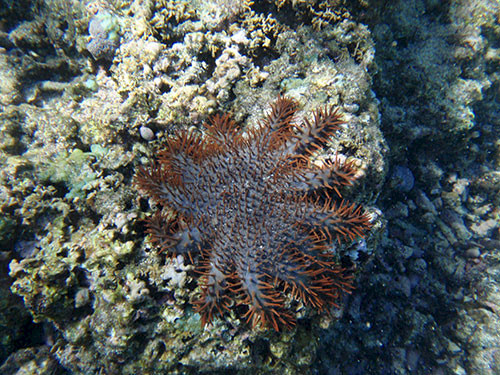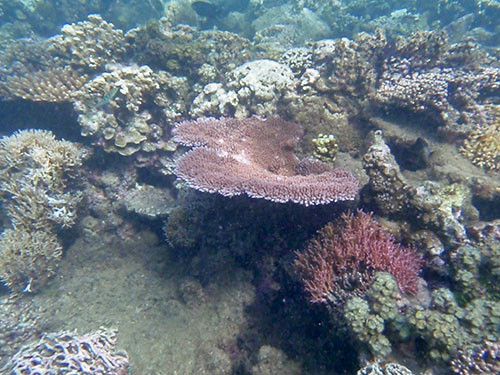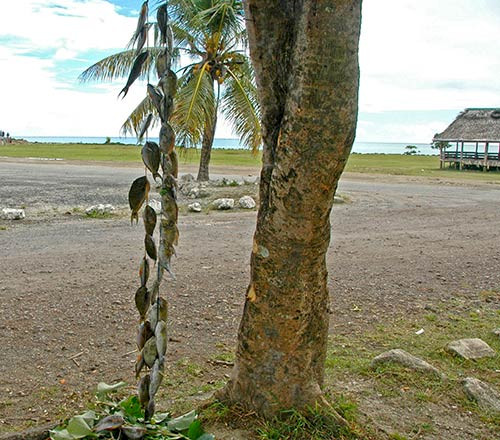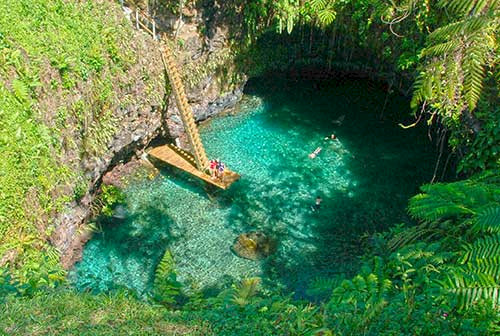Samoa; tsunamis, coral reefs, fishing, dredging
Bill Dennison ·Samoa is broken up into American Samoa and Samoa (formally known as Western Samoa). The islands are volcanic in origin, formed by a 'hot spot' of tectonic activity below the Pacific tectonic plate which is moving from east to west. The last volcanic outburst was on Savai'i, the largest island in the archipelago, in the early 1900s. The volcanic soils are nutrient-rich, resulting in lush plant growth.
Samoa is located 14 degrees south of the equator which means that cyclones can and do strike the islands. The other major disturbance is a result of tsunamis which are generated from the southern edge of the Pacific plate. The most recent tsunami was in 2009, and the southern portions of Samoa were most affected. The harbor in the capitol city of American Samoa, Pago Pago, was also affected by the tsunami.
The reefs that surround the Samoan islands are virtually continuous, forming an extensive shallow reef flat. The region is microtidal, with only small tidal variation. The southern side of the island of Upolu, where the capital city Apia is located, has little live coral as a result of the tsunami. A few small coral colonies have become established, but I observed several crown-of-thorns seastars (Acanthaster planci) lurking about, which may not bode well for a rapid reestablishment of a healthy coral reef.

While snorkeling off the northern coast of both Upolu and Savai'i, I observed the live coral cover was nearly 100%. There were abundant branching Acropora corals, many with fluorescent blue growing tips. There were some Porites heads up to two meters across as well. Large flats of small lettuce coral were out toward the reef edge. The algae growing at the base of the branching coral thickets were guarded by thousands of damselfish. The species diversity in the Samoan archipelago is not as high as the coral triangle to the west, as the central and eastern Pacific islands are dispersal limited.

There were small patches of the seagrass Halophila spp. in shallow water inshore of the coral. The fish life of the coral reef was rather disappointing, as there were no fish larger than 15 cm long. The fish that were being sold at the markets were generally less than 15 cm long, which is a sign that there is intense fishing pressure in the region. I also observed a giant clam (Tridacna) being sold for meat. There are few sea cucumbers or sea urchins on the reef flat, also a sign of intense fishing pressure.


Not unlike the limestone karst in some coastal regions, the coastal lava flows of Samoa lead to water pathways that transport freshwater out to the reef lagoon. Freshwater springs on the coral reef flat and lagoon were evident based on the shimmering effect of the different refractive indices and the slight temperature variation that occurred in breaks in the coral cover, with small sinkholes in some locations. The bubbling up of freshwater into the coral dominated reef lagoon is akin to the cenotes and isles de aqua of the Yucatan peninsula, where nutrient transport has been linked to the freshwater flows (Carruthers TJB, van Tussenbroek BI, Dennison WC. 2005. Influence of submarine springs and wastewater on nutrient dynamics of Caribbean seagrass meadows. Estuarine Coastal and Shelf Science 64(2-3):191–199). It would be worth having a look at this potential nutrient pathway in Samoa and it suggests that nutrient management will be a key feature of future Samoan environmental stewardship.

The ferry that transports people and vehicles between Upolu and Savai'i, the two largest islands of Samoa, navigates a narrow channel through the Upolu reef that is maintained by dredging. The dredging was not quite deep enough, because the ferry prop wash was kicking up sediments throughout the transit through the channel. Dredging channels through reefs can be dangerous for the coral reef integrity, as the reef growth forms a bowl, with the reef edge as the lip of the bowl. Dredging can form an ashtray, in that the lip has artificially low points, allowing water to cascade out of the reef lagoon faster than normal, allowing corals to desiccate. It would be worth a closer look to see if the Samoan reefs are being affected by dredging.
About the author
Bill Dennison

Dr. Bill Dennison is a Professor of Marine Science and Vice President for Science Application at the University of Maryland Center for Environmental Science.

